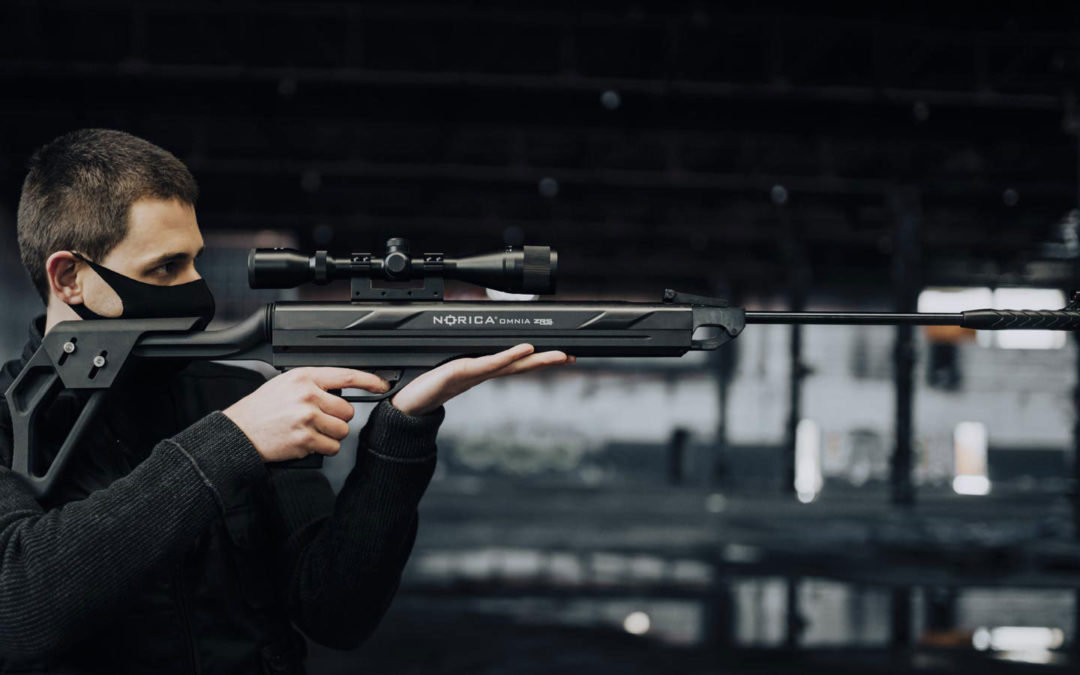Airguns have long been a staple in the gun industry, and their popularity continues to soar worldwide. These often-underestimated weapons were once looked down upon by many, but their rise in quality, power, and aesthetics have made them an attractive option for experienced shooters and newcomers alike. With a diverse range of offerings, airguns continue to provide entertainment and great value for money, while more advanced models cater to competition, hunting, and pest control needs.
A distinct advantage
One of the most significant advantages that airguns have over traditional firearms is their power level, which often permits them to be owned without restrictions in certain countries. In other regions, these guns may possess significant power, making them suitable for taking out pests, rodents, and even larger game. Furthermore, airguns equipped with silencers are permitted in some countries where they would be prohibited for firearms. It’s worth noting that, where permitted by law, PCP rifles capable of firing in semi or even full automatic mode are gaining traction among airgun enthusiasts.
Maximizing opportunities
Despite the limitations placed on firearms ownership in some regions, airguns provide a unique opportunity to partake in shooting sports and hunting activities. These airguns’ modest power levels often permit their ownership without restrictions, making them an ideal option for beginners and experienced shooters alike. In regions where firearms are subject to strict regulations, airguns present a unique opportunity to hone one’s skills and maintain proficiency without the need for extensive bureaucratic hurdles.
Adapting to a chaning market
As the demand for airguns continues to grow worldwide, manufacturers are adapting to changing market demands. With increasing competition and an ever-growing range of products, manufacturers must cater to diverse audiences with varying needs. The result has been an array of products that are suitable for backyard plinking, pest control, match shooting and taking down game at longer distances.
SPRINGER VS. PCP
Two of the most common types of airguns are springer and PCP (Pre-Charged Pneumatic). Springer airguns use a spring to compress air and power the pellet, while PCP airguns utilize a pre-charged air tank to power the pellet. The primary advantage of a PCP airgun is that it provides consistent velocity and accuracy, while springer airguns are more affordable and require less maintenance. Springer airguns are often a preferred option for beginners, while PCP airguns are ideal for advanced shooters looking to improve their accuracy and consistency.
The PCP airgun market is vast and includes a wide range of options. From entry-level airguns to high-end models, there is a PCP airgun for every budget. The entry-level PCP airguns typically have a shot count of around 20 to 30 shots per fill and are ideal for plinking and target shooting. The mid-range PCP airguns usually have a shot count of around 50 to 100 shots per fill and are ideal for small game hunting and pest control. The high-end PCP airguns have a shot count of 200 or more shots per fill and are designed for serious hunters and competitive shooters. PCP airguns are also available in a variety of configurations, including bullpup, carbine, and rifle. The bullpup configuration places the action behind the trigger, resulting in a more compact and balanced airgun. The carbine configuration is ideal for shooters who want a lightweight and compact airgun. The rifle configuration is the most traditional and popular configuration for PCP airguns.
Springer airguns, on the other hand, use a spring or piston to compress air and propel the pellet. Springer airguns are known for their simplicity and reliability. They do not require a tank or cylinder to store compressed air, making them lightweight and easy to carry. Springer airguns are also less expensive than PCP airguns, making them an attractive option for budget-conscious shooters. The springer airgun market is also vast and includes a wide range of options. From entry-level airguns to high-end models, there is a Springer airgun for every budget. The entry-level Springer airguns typically have a lower velocity and are ideal for plinking and target shooting. The mid-range springer airguns usually have a higher velocity and are ideal for small game hunting and pest control. The high-end springer airguns have a high velocity and are designed for serious hunters and competitive shooters. Springer airguns are also available in a variety of configurations, including break barrel, underlever, and sidelever. The break barrel configuration is the most popular and simplest configuration for springer airguns.
Survey results
Our annual survey generated some interesting take-aways. Asked about reasons to buy regarding airguns, the retailers in our survey state power and price are the two market-defining topics. This obviously opens the door to brands who are new to the market yet offer a lot of bang for your buck. Sales numbers have largely stabilized over the last twelve months, which isn’t surprising after the bumper years the airgun industry has known throughout the sanitary crisis of the past few years. Airgun pistol sales meanwhile remain but a small portion of the overall airgun market.The big demand for airguns clearly is in the age groups of buyers under 40. The number of ladies coming into the sport has largely remained the same over the last twelve months.

The bottom line
Airguns continue to gain popularity globally as more and more people discover their unique advantages over traditional firearms. With their modest power levels, these firearms can be owned without restrictions in certain regions, making them an ideal option for beginners and experienced shooters alike. Whether you’re looking for a backyard plinker or a high-powered rifle for hunting, there’s an airgun out there to meet your needs. As the market continues to evolve, manufacturers will continue to adapt and provide innovative products to meet the ever-changing needs of airgun enthusiasts.

